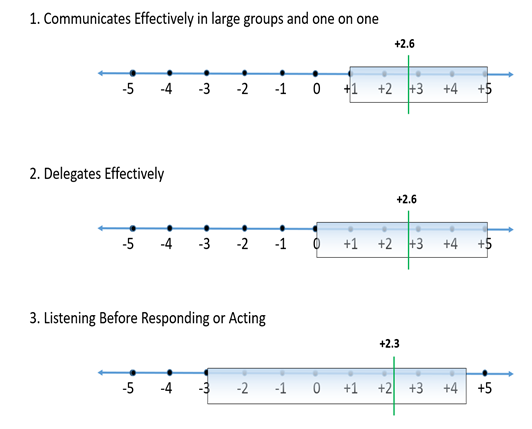Demonstrating ROI is Critical in the Coaching Process

Executive coaching is about developing leaders in areas that will help them be more effective and bring success to their organization. According to the 2020 Executive Coaching for Results Research Study by CoachSource, the top four development areas were emotional intelligence (56%), communication skills (54%), influencing others (52%), and executive presence (45%). Other areas also sought out for coaching include empowering others/delegation, change management, vision and strategy, transition management/first 90 days, etc.
Enterprises with the best leadership tend to thrive because they develop market leading strategies and operating mechanisms, which enable them to respond with greater agility to environmental and other factors that force change. When hiring executive coaches to develop top leaders, organizations want to know what return on investment (ROI) they can expect from coaching.
So how can you best measure the effectiveness of coaching over the length of the engagement? The answer lies in getting input and feedback from stakeholders about the desired changes being sought by the coaching clients.
Involve relevant stakeholders in supporting the outcomes and measurements; Review progress along the way
- Invite the client’s sponsor and HR partner to provide input and agreement for the supporting measurements that were created by the client. Once outcomes are agreed upon, ask the client, sponsor, and HR to determine how business goals will be supported. Getting agreement from all three parties is the key to linking improvement to return on investment.
- Schedule a review meeting with the client and client’s sponsor at least twice during the coaching engagement. In these meetings, the client should review progress with the manager against outcome goals and ask the manager for help needed going forward. Again, getting the sponsor’s input is important to ultimate organizational ownership of the results.
Measure results against the desired outcomes
At the end of the coaching engagement, data on progress against the desired outcomes should be gathered from three different sources:
- The Client: Ask the client to assess success in accomplishing stated goals. Were desired outcomes achieved? Were behavior changes involved in the client’s goals? If so, were they sustained? Did these changes help achieve coaching outcomes? Have others mentioned that they have noticed positive change as a result of coaching? Answers to these questions can be either qualitative or quantitative as measured by a percentage to goal or index basis.
- The Sponsor: Ask the sponsor about the progress observed in the client. Did the client achieve the desired outcomes? Gather qualitative and quantitative feedback. Asking how the client progressed and what actions were taken will help identify whether the desired outcomes were achieved and can also provide great feedback to the client.
- The Stakeholders: Ask the stakeholders who interact with the client whether they believe desired outcomes were achieved via both qualitative and quantitative feedback.
Marshall Goldsmith, a renowned executive coach to CEOs, uses an index range of -5 to 0 to +5, where a negative score indicates a regression from where the client started on a specific behavior and a positive score indicates an improvement.
The following is an example of stakeholder interview questions to measure one of the final desired outcomes:
Coach: “Maria, thanks for meeting with me to discuss Brent’s progress against his leadership development goals. You may remember that Brent has been focused on improving his personal leadership around communication, delegation, and listening.”
Stakeholder (Maria): “Yes, I remember our conversation well.”
Coach: “Brent would like to get your feedback on how he is doing in each of these areas. Specifically, in your view, what feedback do you have on Brent’s skill in delegating? Compared to the last time we met, on a scale of -5 to +5, where above zero means improvement and below zero means regression, what number would you assign Brent regarding his delegation skill?”
Stakeholder (Maria): “Thanks for asking. I think Brent has made significant improvement in this area. From my perspective, he is probably at a +4. He’s upped his game around delegation, yet still has a little room for refinement. Overall, he has really stopped trying to control everything and seems to give his direct reports a lot more trust and accountability.”
With multiple respondents, the scores can be summarized to show both an average and a range, as in the following example:

In the example above, the client’s stakeholders felt that the client made moderate positive progress against their three desired outcomes. The boxed range of scores show that the respondents showed slightly more agreement on the first two items than the third.
Regarding organizational impact and the client, document any ways that the improvement toward the client’s goals helped facilitate the overall business goals. For example, if one of the client’s desired outcomes was to recognize exceptional performance more frequently and in a meaningful way, and the organization’s goal was to create a culture of enthusiasm and engagement, is there evidence that both occurred? Could there be a possible correlation between the client’s behavior and the organization’s key performance indicator?
A final four-way meeting should be held between the client, the sponsor, HR, and the coach to discuss the findings of the data collected and to get the viewpoint of everyone regarding the success of the coaching engagement. The summary can be used by the manager to further coach the client going forward.
Summarizing stakeholder quantitative progress with supporting qualitative comments, while maintaining appropriate confidentiality, demonstrates ROI and highlights the value of the coaching process.
How can coaching help develop leadership capabilities of your key talent so that more are viewed as ready now for the next level?
##
Lance Hazzard, PCC, CPCC, is a certified Intelligent Leadership Executive Coach helping people and organizations achieve success. This post includes material from the book, Accelerating Leadership, co-authored by Lance and Eric T. Hicks, Ph.D., published in June 2019. More details and examples of ROI can be found in the book. Lance is Executive Coach and President at Oppnå® Executive & Achievement Coaching. More information can be found on the book, Lance and Oppnå® Coaching at the links below: